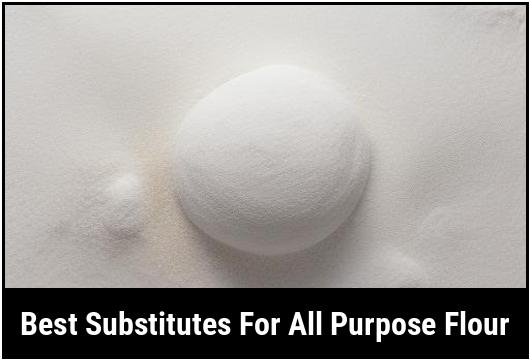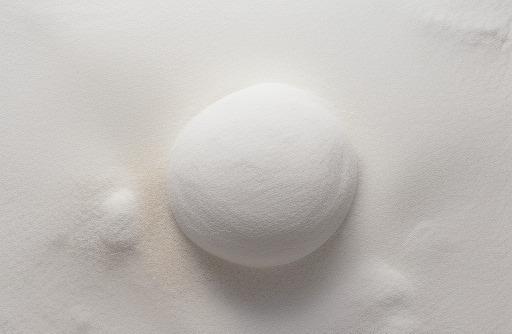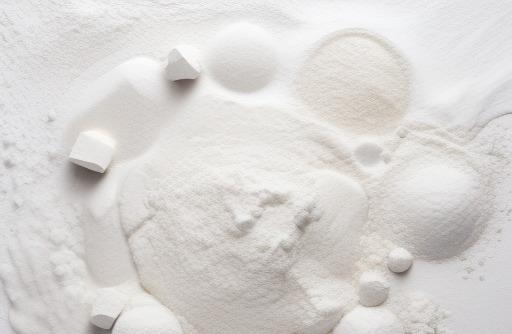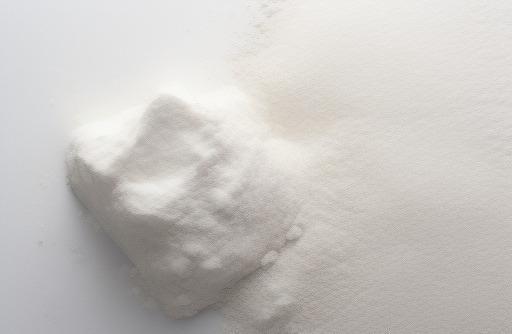Best Substitutes For All Purpose Flour

Flour is a staple ingredient in many recipes, particularly when it comes to baking. However, not everyone can tolerate or consume all purpose flour due to dietary restrictions, allergies, or personal preferences. Fortunately, there are several great substitutes for all purpose flour that can be used in various recipes without sacrificing taste or texture. In this article, we will explore these substitutes and provide tips on how to choose the right one for your needs.
Key Takeaways
- All purpose flour can be substituted with a variety of alternatives.
- Different types of substitutes work better in specific recipes.
- Gluten-free flours are ideal for those with gluten intolerance or celiac disease.
- It is important to adjust measurements and ratios when using substitutes.
- Experimentation and practice are key to finding the perfect substitute for your recipe.
Why You Need A Substitute For All Purpose Flour
There are several reasons why you may need a substitute for all purpose flour. Here are a few common scenarios:
-
Gluten Intolerance or Celiac Disease: All purpose flour contains gluten, which can cause adverse reactions in individuals with gluten intolerance or celiac disease. Using gluten-free flours as substitutes allows these individuals to enjoy their favorite foods without suffering from digestive issues or discomfort.
-
Allergy Concerns: Some people are allergic to wheat, which is a primary ingredient in all purpose flour. Alternatives like almond flour or coconut flour can be used to replace wheat-based flours in recipes, making them safe for those with wheat allergies.
-
Dietary Preferences: Many individuals follow specific dietary plans, such as a low-carb or keto diet, where the consumption of refined flours is limited. Alternative flours, such as nut-based flours or flours made from seeds, are often preferred in these cases.
Types Of Substitutes For All Purpose Flour

When it comes to substituting all purpose flour, there is a wide range of options available. The key is to choose a flour or a combination of flours that will yield similar results to all purpose flour in terms of texture and taste. Here are some common types of substitutes:
-
Gluten-Free Flours: There are various gluten-free flours available in the market, such as almond flour, coconut flour, rice flour, tapioca flour, and chickpea flour. These flours are ideal for those with gluten intolerance or celiac disease.
-
Nut-Based Flours: Nut-based flours, such as almond flour, hazelnut flour, and cashew flour, add a nutty flavor and a moist texture to baked goods. These flours are great alternatives for all purpose flour in recipes like cakes, cookies, and muffins.
-
Seed-Based Flours: Flours made from seeds like flaxseed, chia seed, and sunflower seed can be used as substitutes for all purpose flour. These flours are packed with fiber and healthy fats, making them an excellent choice for those following a low-carb or keto diet.
-
Bean-Based Flours: Flours made from beans, such as chickpea flour (also known as gram flour or besan), can be used in a variety of recipes. They add a unique flavor and a denser texture to baked goods.
-
Gluten-Free Blends: Many brands offer gluten-free flour blends that are specifically formulated to mimic the texture and taste of all purpose flour. These blends are made by combining different gluten-free flours and starches. They are convenient options as they can be used as a 1:1 replacement for all purpose flour in most recipes.
Best Substitutes For All Purpose Flour

-
Almond Flour: Almond flour is a popular substitute for all purpose flour, especially in gluten-free and low-carb baking. It has a fine texture and a slightly sweet, nutty flavor that works well in a variety of recipes. Almond flour is high in protein, low in carbs, and rich in healthy fats. It can be used in a 1:1 ratio as a substitute for all purpose flour in most recipes. However, it is important to note that almond flour is not suitable for those with nut allergies.
-
Coconut Flour: Coconut flour is another excellent substitute for all purpose flour, especially for those following a gluten-free or grain-free diet. It is made from ground and dried coconut meat, giving it a naturally sweet and tropical flavor. Coconut flour is highly absorbent and requires more liquid in recipes. It is often used in combination with other flours or with added eggs to improve the texture and binding properties. Due to its high fiber content, recipes using coconut flour often require additional eggs or a binding agent like xanthan gum.
-
Rice Flour: Rice flour is a versatile substitute for all purpose flour and is commonly used in gluten-free baking. It has a mild taste and a smooth texture. White rice flour is made from finely ground white rice, while brown rice flour is made from whole grain brown rice. Rice flour is often used in combination with other flours to improve the texture of baked goods. It can be used in a 1:1 ratio in many recipes, but some adjustments may be required for certain baked goods.
-
Tapioca Flour: Tapioca flour, also known as tapioca starch, is a gluten-free flour made from the starchy extract of the cassava root. It has a neutral taste and a fine texture, making it a great binding agent and thickener. Tapioca flour is commonly used in combination with other flours to improve the texture of gluten-free baked goods or as a thickening agent in sauces, soups, and gravies. It can be used in a 1:1 ratio as a substitute for all purpose flour in recipes that require thickening or a chewy texture.
-
Chickpea Flour: Chickpea flour, also known as gram flour or besan, is a versatile flour made from ground chickpeas. It has a nutty flavor and a dense texture. Chickpea flour is commonly used in Indian and Middle Eastern cuisines for dishes like socca, pakoras, and falafel. It can be used as a substitute for all purpose flour in recipes that require a denser texture or a savory flavor. However, due to its different properties, some adjustments may be required when using chickpea flour in baking.
-
Gluten-Free Flour Blends: If you prefer a convenient option that closely resembles the properties of all purpose flour, gluten-free flour blends are a great choice. These blends are typically made from a combination of gluten-free flours, starches, and sometimes xanthan gum as a binding agent. They are designed to mimic the texture and taste of all purpose flour, making them an easy 1:1 substitute in most recipes.
Choosing The Right Substitute For All Purpose Flour

Choosing the right substitute for all purpose flour depends on the type of recipe, dietary restrictions, and personal preferences. Here are some factors to consider when selecting a substitute:
-
Texture: Consider the desired texture of the final product. Some substitutes, like almond flour, may result in a denser texture, while others, like coconut flour, may yield a lighter texture.
-
Flavor: Think about the flavor profile you want to achieve. Nut-based flours add a distinct nutty flavor, while coconut flour adds a hint of coconut flavor. Rice flour and tapioca flour have a neutral taste, making them suitable for a wide range of recipes.
-
Dietary Restrictions: If you have any dietary restrictions, such as gluten intolerance or nut allergies, make sure to choose a substitute that aligns with your needs. Gluten-free flours and blends are suitable for those with gluten intolerance or celiac disease, while nut-free options like rice flour or tapioca flour can be used to replace nut-based flours.
-
Recipe Adaptation: Consider how the substitute will affect the overall recipe. Some substitutions may require adjustments in terms of liquid measurements, binding agents, or leavening agents. It is important to understand the properties of the substitute and how it interacts with other ingredients to ensure a successful outcome.
Cooking With Substitutes For All Purpose Flour

When cooking with substitutes for all purpose flour, it is essential to keep a few things in mind for optimal results:
-
Measurement Conversion: Since different flours have different weights, it is important to adjust the measurements accordingly. In most cases, a 1:1 ratio can be used when substituting all purpose flour with almond flour, coconut flour, or rice flour. However, some experimentation and adjustments may be needed for specific recipes. It is advisable to start with a smaller substitution and gradually increase it if needed.
-
Liquid Adjustments: Some substitutes, such as coconut flour, are highly absorbent and may require additional liquids in recipes. In general, it is advisable to increase the liquid content slightly when using these substitutes. This can be done by adding more water, milk, eggs, or other liquids called for in the recipe.
-
Binding Agents: Some gluten-free flours lack the binding properties of all purpose flour, which can affect the texture of baked goods. To overcome this, you can add a binding agent like xanthan gum or guar gum. These can help improve the texture and structure of gluten-free baked goods, especially when using flours like almond flour or coconut flour.
-
Leavening Agents: Some recipes may require adjustments in the amount of leavening agents, such as baking powder or baking soda, when using substitutes for all purpose flour. This is because the texture and rising ability of the substitute may be different from that of all purpose flour. It is recommended to follow a recipe specifically designed for the substitute you are using or experiment with adjustments to get the desired result.
Remember that cooking with substitutes for all purpose flour may require some trial and error. It is advisable to start with small substitutions and make adjustments gradually until you achieve the desired texture and taste.
Recipes Using Substitutes For All Purpose Flour

Here are a few delicious recipes that can be made using substitutes for all purpose flour:
Almond Flour Chocolate Chip Cookies
-
Ingredients:
- 2 ½ cups almond flour
- ½ teaspoon baking soda
- ¼ teaspoon salt
- ½ cup coconut oil, melted
- ½ cup honey or maple syrup
- 2 teaspoons vanilla extract
- ½ cup chocolate chips
-
Instructions:
- Preheat the oven to 350°F (175°C) and line a baking sheet with parchment paper.
- In a large bowl, whisk together the almond flour, baking soda, and salt.
- In another bowl, mix together the melted coconut oil, honey or maple syrup, and vanilla extract.
- Gradually add the wet ingredients to the dry ingredients and mix until well combined.
- Fold in the chocolate chips.
- Drop rounded tablespoons of dough onto the prepared baking sheet and flatten slightly.
- Bake for 10-12 minutes, or until golden brown around the edges.
- Allow the cookies to cool on the baking sheet for 5 minutes, then transfer them to a wire rack to cool completely.
Coconut Flour Banana Bread
-
Ingredients:
- ½ cup coconut flour
- ¼ cup almond flour
- 1 teaspoon baking powder
- ½ teaspoon baking soda
- ½ teaspoon ground cinnamon
- ¼ teaspoon salt
- 3 ripe bananas, mashed
- ¼ cup coconut oil, melted
- ¼ cup honey or maple syrup
- 3 large eggs
- 1 teaspoon vanilla extract
- ½ cup chopped walnuts (optional)
-
Instructions:
- Preheat the oven to 350°F (175°C) and grease a loaf pan.
- In a large bowl, whisk together the coconut flour, almond flour, baking powder, baking soda, cinnamon, and salt.
- In another bowl, mix together the mashed bananas, melted coconut oil, honey or maple syrup, eggs, and vanilla extract.
- Gradually add the wet ingredients to the dry ingredients and mix until well combined.
- Fold in the chopped walnuts, if desired.
- Pour the batter into the greased loaf pan and smooth the top.
- Bake for 45-55 minutes, or until a toothpick inserted into the center comes out clean.
- Allow the banana bread to cool in the pan for 10 minutes, then transfer it to a wire rack to cool completely.
Pro Tip:
When using coconut flour, it is important to note that it absorbs more liquid than all purpose flour. To prevent dryness, it is best to add additional eggs or liquid to the recipe. Start by adding an extra egg or increasing the liquid content by approximately ¼ cup and adjust as needed.
Storage And Shelf Life Of Substitutes

Substitutes for all purpose flour may have different storage requirements and shelf lives compared to all purpose flour. Here are some general guidelines:
-
Almond Flour: Almond flour should be stored in an airtight container in the refrigerator or freezer to preserve its freshness. It can be kept in the refrigerator for up to 6 months or in the freezer for up to a year.
-
Coconut Flour: Coconut flour should also be stored in an airtight container in a cool, dry place. It can be kept for up to 6 months at room temperature, but it is advisable to refrigerate or freeze it to extend its shelf life.
-
Rice Flour: Store rice flour in an airtight container in a cool, dry place away from direct sunlight. It can be kept for up to a year if stored properly.
-
Tapioca Flour: Tapioca flour should be stored in an airtight container in a cool, dry place. It has a long shelf life and can be kept for up to 2 years.
-
Chickpea Flour: Chickpea flour should be stored in an airtight container in a cool, dry place. It can be kept for up to 6 months at room temperature, but refrigeration is recommended for longer storage.
-
Gluten-Free Flour Blends: Gluten-free flour blends should be stored according to the guidelines provided by the manufacturer. In general, they should be stored in a cool, dry place and used within the specified timeframe mentioned on the packaging.
It is important to check the expiration dates and perform a sensory evaluation before using any flour substitute that has been stored for a long time. If the substitute appears off in color, smell, or taste, it should be discarded.
Conclusion
Finding the best substitute for all purpose flour can open up a world of possibilities for those with dietary restrictions or preferences. Whether you are looking for a gluten-free option, a low-carb alternative, or a nut-free option, there are plenty of substitutes available that can produce delicious and satisfying results. Experimentation and practice are key to finding the perfect substitute for your recipes. Remember to consider factors such as texture, flavor, and dietary restrictions when selecting a substitute, and be prepared to make adjustments in measurements, liquids, and binding agents as needed. With a little creativity and the right substitute, you can continue to enjoy your favorite recipes with confidence.
FAQS
What Are Some Common Substitutes For All Purpose Flour?
Some common substitutes for all purpose flour include almond flour, coconut flour, oat flour, spelt flour, and gluten-free flour blends.
What Is Almond Flour And How Does It Compare To All Purpose Flour?
Almond flour is made from ground almonds and is a great substitute for all purpose flour in baked goods. It is higher in protein, healthy fats, and fiber than all purpose flour, making it a healthier alternative. However, it does not have the same gluten content as wheat flour, so it may not work as well in certain recipes.
Can Coconut Flour Be Used As A Substitute For All Purpose Flour?
Yes, coconut flour is a great alternative to all purpose flour, especially for those following a gluten-free or low-carb diet. It is high in fiber, protein, and healthy fats, and has a slightly sweet flavor. However, it absorbs more liquid than all purpose flour, so recipes may need to be adjusted accordingly.
What Is Spelt Flour And How Does It Compare To All Purpose Flour?
Spelt flour is an ancient grain that has gained popularity as a healthier alternative to all purpose flour. It has a nutty flavor and is higher in protein, fiber, and B vitamins than all purpose flour. However, it does contain gluten, so it may not be suitable for those with gluten sensitivities or celiac disease.
Are There Any Gluten-free Flour Blends That Can Be Used As A Substitute For All Purpose Flour?
Yes, there are many gluten-free flour blends available that can be used as a substitute for all purpose flour. These blends are typically made from a combination of rice flour, potato starch, tapioca flour, and xanthan gum, and can be used in a 1:1 ratio in most baking recipes. However, it is important to read the label carefully to ensure that the flour blend is truly gluten-free.
Sources
About the Author Jenny
I'm Jenny, a housewife with an unwavering passion for food. My culinary journey began with my grandmother's kitchen, and it's now a full-fledged food blog. I've turned my love for cooking into a creative outlet, sharing recipes and stories with a global community of fellow food enthusiasts. It's proof that being a housewife can also mean pursuing your passions and savoring life's delectable moments.
